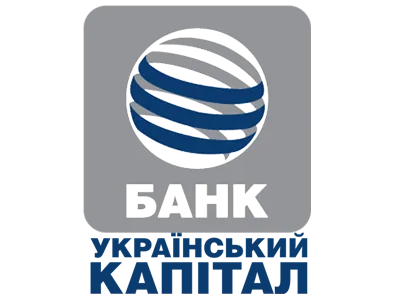
WE ARE TRUSTED BY
Today, over 1,000,000 clients across 36 banks are using the iFOBS system, including:
JSC "The State Export-Import Bank of Ukraine" (Ukreximbank), JSC "KredoBank", JSC "OTP Bank", JSC "Credit Agricole Bank", JSC "Sense Bank", JSC "SEB Corporate Bank", JSC "Industrialbank", JSCB "Lviv", JSC "Piraeus Bank ICB", PJSC "Bank Pivdennyi", JSC "Agroprosperis Bank", JSC "Globus Bank", JSC "European Industrial Bank", JSC "International Investment Bank", PJSC "MTB Bank", FinComBank S.A. (Moldova), Banca Comercială Moldindconbank S.A. (Moldova), and others.




























































SOLUTION ADVANTAGES
- The user can control the location of the main menu, the content of the main page, set a dark or light interface theme, and adjust the order and number of columns on forms with lists of documents;
- The main page is presented in the form of widgets: "Accounts", "Recent documents", "Documents to be signed", "Exchange rates", "My statements", "Settings", "Notifications", while the order and number of widgets can be customized by the user to suit their business needs;
- On the bank's side, it is possible to place advertising and information banners to offer customers new products and services.

FUNCTIONALITY
The system's functionality includes both basic services (documents in national currency, foreign exchange requests, accounts and statements, loans and deposits, messaging between the client and the bank) and a variety of additional services that can be connected to the system as needed:
- Salary projects
- Corporate cards
- Regular payments
- Online requests for products and services
- Remote registration
- Electronic contracts
- Exchange of electronic documents with the possibility of two-sided signing
- Foreign economic activity and much, much more
Special attention is paid to security and compliance with regulatory requirements. Several options are offered for user authentication and signature management.

MOBILE BANKING
The most advanced and up-to-date remote service channel for bank clients is the iFOBS.Mobile app. It enables the bank to offer a complete interaction cycle — from client onboarding to account activation and personalized service delivery.
Designed for smartphones running iOS and Android, iFOBS.MobileCorporate, in addition to basic services (current accounts and statements, payments in national currency and payment templates, deposits and loans, messaging), provides the following additional services:
- Customer registration
- Corporate cards
- Creation of documents in foreign currency
- Deposit opening
- Reviewing and signing payrolls
- Regular payments, online requests for services
- Statistics of income and expenses and much more

# NEWS

This year we all felt how vital remote banking services are: to receive and transfer money to loved ones, to donate for the army, to pay bills or taxes – to help, support, survive… Therefore, all year long we have been developing our front-office systems and introduce new online services for the clients in Ukrainian banks.
iFOBS internet banking
ISO 20022 support
First of all, it is worth mentioning the improvements connected with the transition to the new ISO 20022 payment standard:
- In accordance with the requirements of the new pain.001 payment format, we have expanded the fields for entering the document number (up to 35 characters), the payer and recipient name (up to 140), ID code (up to 35), payment purpose (up to 420) – for all forms of payment documents in the national currency, including the regular payments, information debit documents, reference books, printed forms, import-export formats.
- We’ve tested the iFOBS.AutoClient\OCI module with the ISO 20022 mode enabled.
- We’ve implemented a tool for information sync on the pacs.008 payment message (“Credit transfer of client funds at the agent level”) from CBS B2 to iFOBS: parameters of the debtor, creditor, payment initiator, actual payer, actual recipient and details of the payment purpose. Now we are working on displaying to the client in iFOBS a payment instruction built on the basis of CBS B2 data. The functionality will be implemented in web-, win- and mobile-clients as an additional option on the document view form in the national currency.
- There are also plans to build a statement in the camt.053 format in the client bank.
NBU BankID protocols updating
As for the BankID remote identification service. During the past year, the NBU updated the protocol specification four (!) times (“Specification of the interaction of the subscriber node with the central node of the NBU BankID System”). In accordance with these requirements, we implemented the necessary changes to the iFOBS.BankID module for all banks that use our solution: Ukreximbank, OTP Bank, Bank Lviv, Motor Bank, Crystalbank, PINBank.
All improvements were of high quality and made on time, and today all our customers have received updates and work with the up-to-date version of the NBU BankID protocol.
New version of the web client
We continue to transfer our customers to the new iFOBS web version for corporate clients. The application is based on new technologies and has a number of advantages compared to the old version:
- a fundamentally new design that allows the client to independently configure invoice and document widgets on the main page and quickly move on to basic operations;
- new options for statements: more export formats, the ability to generate a statement by a specific correspondent, send it on e-mail, additionally – an asynchronous mode for statements composing with a large amount of data;
- extended basic set of document import and export formats;
- advanced signing tool, bulk signing of payments, signing on behalf of another user and much more.
The new web version has already been chosen by Kredobank, Bank Lviv, Avangard Bank, iBOX Bank, PINBank, and the list is constantly updated.
Clients onboarding
We continue to develop solutions for online customer registration, which becomes even more relevant in wartime conditions. For private customers which are already the bank clients, we implemented the opportunity to register in the iFOBS system by the number of a deposit or loan agreement (Bank Avangard) in addition to the existing possibility of registering by a bank card number (Bank Lviv) or by a current account number.
For new bank clients – private customers, we implemented an online identification process in Avangard Bank, including registration via a mobile app, the ability to download or receive client documents from Diia, perform all necessary checkups and, as a result, open accounts and connect to the system.
Now we are working on schemes for registering corporate customers, in particular, sole proprietors. We possess all the necessary tools for this:
- internet and mobile banking for setting a client’s cabinet, where they can apply for registration, receive, and sign the necessary documents;
- module for working with electronic signature for authorization and documents signing;
- modules for interaction with Diia and Diia.Pidpys services;
- modules-connectors to the external sources of information about the client;
- services to CBS B2 and the card system for the financial monitoring application formation, accounts and cards opening;
- services for third-party video verification solutions;
- AnyService module for creating online applications, questionnaires, etc.;
- DocUpload module for uploading and two-way signing of electronic documents.
The integration platform based on CFRONT allows to combine all the process components, perform the necessary verification and, if necessary, quickly deploy changes to the process.
Several banks have already applied to us for online registration automation, and we are actively working in this area.
Cards
A bank payment card is becoming even more popular payment means both within the country and abroad. An increasing number of our customers are implementing a card module for their clients – private customers (Bank Portal), corporate customers (PINBank), small and medium-sized businesses (Motor-Bank), providing the opportunity to manage cards both in iFOBS internet banking and in iFOBS.Mobile banking.
The list of available card operations has been expanded with several interesting services:
- Viewing the CVV code of a payment card in a mobile app (Bank Lviv).
- Requesting a CVV code in the web client (Sense Bank).
The clients of these banks have the opportunity to use the new cards for online payment immediately after issuing, without visiting the bank branch.
- 3DS Authentication (Crystal Bank) – the bank clients have the opportunity to confirm payments on the internet using biometric authorization in the iFOBS app.
Other services
It is worth mentioning a few more of our banks, which have launched new services for their clients this year.
MTB Bank has improved its mobile banking for corporate clients, introduced many interesting features and launched several new services, e.g. online deposit ordering, displaying the bank’s facsimile stamp on the statement, mass signing of documents.
Motor Bank has implemented services for remote management of deposits and loans for SME clients, the iFOBS.Facsimile module for corporate and private clients in the iFOBS web version and mobile banking.
BIS bank has launched mobile banking for corporate clients, and also implemented the iFOBS.MultiKeys module, which allows clients to work in the iFOBS system with external CA keys (e.g. tax keys).
The iFOBS.PushMessages module, which provides the delivery of data via push notifications, was ordered by Ukreximbank and Bank Lviv. Now confirmation codes and other important information from the bank will be sent to customers via a more reliable channel.
OTP Bank is working on launching of several interesting projects for corporate clients at once, including electronic contracts, centralization of foreign exchange operations (integration with the Baxter trading platform) and a new design of the OTPay Mobile.
By the way, this year several banks approached the issue of updating the design, and we hope that they will soon please their customers with modern and convenient updated versions.
Redesign of all iFOBS products for the new Sense Bank brand book
Separately, the iFOBS redesign project for Sense Bank should be highlighted.
As you know, on December 1, Alfa-Bank officially completed the procedure for changing the name of the bank’s brand to Sense Bank. In connection with the rebranding, our company, in cooperation with the bank, carried out a large project to redesign all iFOBS software products for the new Sense Bank brand book.
By the way, Sense Bank uses the most modern version of iFOBS internet banking for corporate clients, based on microservice architecture and cloud storage of iFOBS.iSignCloud keys.
CFRONT integration platform
There were also many interesting implementations based on the CFRONT integration platform.
Lending
For Globus Bank (Ukraine) we’ve implemented the following:
- a new online process for obtaining loans for goods in online stores, which gives customers the opportunity to obtain a credit for the purchase without coming to the store;
- a universal scheme for opening accounts in a mobile application or linking a virtual card to an existing account;
- receiving and processing requests for changing the amount of the card limit from the mobile app;
- opening cards under the ePidtrymka program (virtual or binding pre-personalized) from a mobile app.
We continue to work on a loan automation project for the bank of Moldova – a process for corporate customers has been implemented, including searching for information about the borrower in B2 CBS and external sources, transferring data to verifiers to make a decision on issuing a loan, generating printed forms of documents, etc. The project is quite complex and interesting due to the large number of integrations with third-party solutions. After the launch of the system in prod, we will inform you in greater detail about this project.
Online registration
Online registration with the process based on the CFRONT integration platform has become a separate area. There is a successful project for online registration of clients – private customers in Avangard Bank, which we mentioned above (see “Clients onboarding”). Recently, we have received several requests to automate online registration for corporate customers, in particular, sole proprietorships.
Service Provider Platform (UPBS)
The project of building a new version of the UPBS system on the CFRONT platform turned out to be rather exciting experience.
Recall that UPBS is a universal system for receiving and processing utility bills and payment for provider services from bank customers, the core of the system is an integration gate that interacts with providers’ online services and bank information systems.
Recently, a new system architecture has been developed, which is based on the CFRONT platform and has the following advantages:
- the ability to fully diagnose the business process change it quickly;
- Email-informing in case of errors/failures;
- improvement of the administration system, response speed, support quality;
- more flexible setting of commissions and tariffs;
- automatic registers sending to CBS.
The updated version of UPBS successfully works on the industrial environment of PINBank, and we recommend that all our customers gradually migrate to the new version.
iB2 and SyncGate
MTB Bank continues to increase the integration of the iB2 Single Account system in CBS B2 with the Way4 card system. At the same time, the iB2 system in the bank works with the IS-Card card issuance system and FUIB processing, and thus ensures the automation of maintaining and servicing card accounts simultaneously in several card systems.
Bank Lviv implemented the SyncGate module in 2022, which is responsible for receiving advice messages from card processing system and processing them. This time we have implemented the receipt of advice messages from the FUIB processing, and this is already the third processing (after UPC and SmartVista), advice messages from which can be processed in the banking system, which speeds up the receipt of information on the funds movement on card accounts.
VISA B2B
The integration of CBS B2 with the services of the VISA B2B Connect system allows bank clients – corporate customers to make the expedited foreign currency transfers to accounts of other banks in the world or to receipt the funds.
For the first time in Ukraine this product was introduced in 2021 at the BIS Bank, and in 2022 one more bank started VISA B2B Connect system implementation.
—
Dear colleagues, we are grateful for reading our report to the end!
These are far from all the interesting features we have implemented during this extremely difficult year. Therefore, do not feel offended if some projects are not included in the list.
As we continue to work for both you and your valued customers, for all Ukrainians.
We are doing our best to support our financial system and bring the Victory closer.
See you soon!
What changes will take place in the iFOBS remote banking system during the transition to the new SEP-4 standard? Should the new payment format with the symbolic “pain.001” name become a headache for the client? What has been done so far and what is planned? The analysts from the Front Office Systems Department at CS ltd are answering the above-mentioned and other questions.
How will the standard payment order in national currency change?
The main entity that clients work with in iFOBS is a payment order in national currency. Now for the client convenience it contains the minimum number of details to fill in. In the future, according to the requirements of the new pain.001 payment format, the client payment form will have an extended set of fields to be filled in. First, it is the Payment purpose and the details of Payer and Recipient.
Therefore:
- the payment order in the national currency will be expanded with the required set of fields to be filled in for compatibility with the new pain.001 format.
Should pain.001 become a headache for the client?
This is one of the first questions we’ve asked ourselves. Should all the new standard innovations of electronic payments in Ukraine between banks and agents become a headache for the client?
We don’t want to make things difficult for a client. We would like to leave the form of payment in the national currency the way it is now – small (fits on one screen) and familiar for clients. Unfortunately, the changes should be made, so we are planning to make them as painless for the client as possible.
What exactly is planned to be done in terms of sending the payment under the SEP-4?
The new form of payment in the national currency looks like SWIFT payment form, but we want to make it smaller than SWIFT and, at first glance, this task looks quite possible.
Nevertheless, we must expand the “Payment purpose” field with a structured block for entering new data. This has already been done in our test version. The same structuring will apply to the tax payment details – in this part, we also work with specialists from the regulator and the State Tax Administration of Ukraine, and we will have to take into account the latest changes reflected in the pain.001 version.
We also have to take into account the extensions proposed by the new standard in the details of the Payer and Recipient – and we have already increased the size of the fields with the name of the Payer and Recipient. Subsequently, in this part, we are planning to consider the possibility of dividing into the actual payer and recipient, and into actual ones, as the pain.001 suggests.
However, we do not want the client to take all requirements in filling out the payment form as pain.001. For example, we would like to restrict ourselves to implementing the payment import format as pain.001. So, if the client’s accounting system can export the payments created in it to the pain.001 format, then the iFOBS system will be able to import them in the same format (at least large import accounting ERP systems can perform such exports).
Thus, as for the payments sending in SEP-4 there will be the following changes:
- the “Payment purpose” field will be expanded and subsequently structured on all forms of creating, viewing and editing documents in hryvnia, lists of payments and templates;
- the details of the Payer will be expanded;
- the details of the Recipient will be expanded;
- the ability to import documents in pain.001 format will be added.
What about new roles in the chain of payments sending and receiving?
In the new format, in addition to the usual Payer and Recipient, additional possible participants appear on both sides – the Payment initiator, Payer and Actual payer, the Recipient and Actual recipient, intermediary agents (Agent 1, Agent 2, etc.).
We decided that at the moment we equate all the roles and leave the clients as they were: there is only one Payer who wants to pay, and there is one Recipient who wants to receive. So, the Payment initiator, Payer and Actual payer are the “Payer”, the Recipient and Actual recipient are the “Recipient”.
As for intermediary agents, the presence of which provides for the pain.001. As experience shows, a client who now, and in the near future, needs to make a hryvnia payment within Ukraine, is unlikely need to instruct they bank to put this payment through a network of intermediaries.
Subsequently, if there is a need to expand the network of agents, we will return to this issue and implement what the client specifically needs.
In total, at this stage:
- all participants in payment sending are equated to a “Payer” single role;
- all participants in the payment receipt are equated to a “Recipient” single role;
- the payer’s bank will directly transfer the payment to the beneficiary’s bank, without agents.
What is planned to be done as for the payment receiving from SEP-4?
Of course, in addition to the “Pay” function, the remote banking system has a “Receive” function. In this regard, iFOBS will standardly, as before, collect payments made from Documents of the Day in the CBS. That is, as before, all transactions will come from the CBS to iFOBS, the client will see their outgoing and incoming payments, build on their basis a printed statement form, which is familiar to both clients and accounting department.
If the bank uses B2 CBS, in addition to the existing data structure, iFOBS will be able to download its XML structure from B2 for each transaction – this is part of the pacs from SEP-4 which entered the bank. With the help of this XML structure, we plan to implement the second part within the framework of the new standard at the client site, which directly refers to the client requests to the remote banking system, namely, it will allow to upload a statement in the camt.053 format.
Such an upload, again, will be performed as an export file for further uploading to the client’s accounting system, if this accounting system can import account entries (statement) in the camt.053 format.
That is, in terms of receiving payments from SEP-4, the following is planned:
- receiving a statement in the camt.053 format;
- ability to request selectively an XML file for an incoming payment in B2 CBS.
Where are we now and what are the future plans?
With the emergence of the first news about the new ISO 20022 standard introduction and the transition to SEP-4, we started at once and continue to conduct analytical work.
We have studied the interim data from the regulator (when the first, partially developed pain.001 formats were provided), participated in workshops, in discussions and followed the explanatory work of the regulator.
Since we had had already developed formats (at the moment, the pain.001 format dated October 1, 2021, is considered to be finalized), we began to deploy a separate test line of servers for developing and testing new outgoing and incoming payments to be able to check during development the payments transferring from the client via the CBS to the new SEP and back to the client.
There is already certain planned version for iFOBS release – 21.8.0.X.
Total for today:
- a preliminary analysis of the requirements for the new format was carried out;
- at the moment, the deploying a separate line of iFOBS test servers is in the process;
- the nearest plans include connecting the iFOBS 21.8.0.X version to the NBU SEP-4 test bench (via B2).
What about the new ISO 20022 tools implementation: payment recall and others?
Indeed, the new standard provides special formats for initiating such requests and notifications of such requests’ execution, but for now we are acting within the framework of what iFOBS can provide at the moment.
Of course, we are ready to expand the number of entities in iFOBS. For example, now, in addition to payments, it is possible to create information debit documents (“invoices”) and payrolls.
If there is an expansion of the system functionality with such entities as payment recall request, then, of course, under the conditions of the new standard, the addition of these entities is followed by meeting the requirements for formats.
What is expected on August 20, 2022?
As a result, we have the following date: August 20, 2022, and the following task set by the regulator and the market: to ensure sending payments, receiving payments and statements in new formats.
So, if the new generation of SEP starts working from August 20, 2022, we will also have to provide our customers with sending payments through all channels of the iFOBS remote banking: web client, win client, mobile clients, open interfaces.
All above-mentioned is in our work plan, and we will provide it by the specified date to the above-mentioned extent. And for the next step, the market will assist, and both the regulator and clients themselves will help.

Recently one of our clients – Sense Bank – reported on the successful completion of the iFOBS software update and migration to Google Cloud data center.
“Through collaborative efforts with iFOBS, Sense Bank successfully completed the migration to Google’s cloud data center in August 2023,” stated the bank. “We’d like to express our gratitude to all those who participated in the project, pushing us to achieve the nearly impossible, contributing ideas, and swiftly implementing solutions. Together, we’ve achieved our goal!”
We would like to remind you that corporate clients of Sense Bank use the most recent version of the iFOBS system based on the microservice architecture.
“The microservices architecture enabled us to distinctly separate business functionalities among system services, eliminating the challenge of simultaneously managing projects for different functionalities. We can quickly and securely introduce new services for clients, developing and updating them in a modular manner,” remarked the CS team about the project.
Thanks to the platform’s capabilities and the seamless collaboration of both teams, we were able to successfully execute a software upgrade of iFOBS built on the microservices architecture, update to the current version of the Kubernetes platform used for deploying microservices, and smoothly migrate data to Google Cloud data center.
We take great satisfaction in our clients’ success and persist in advancing our solutions while providing timely updates on the most recent developments.




